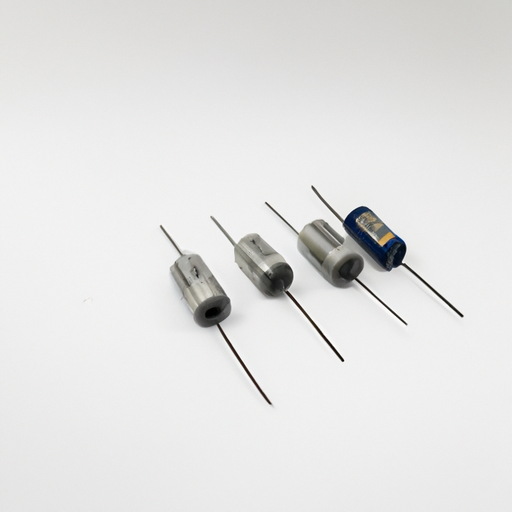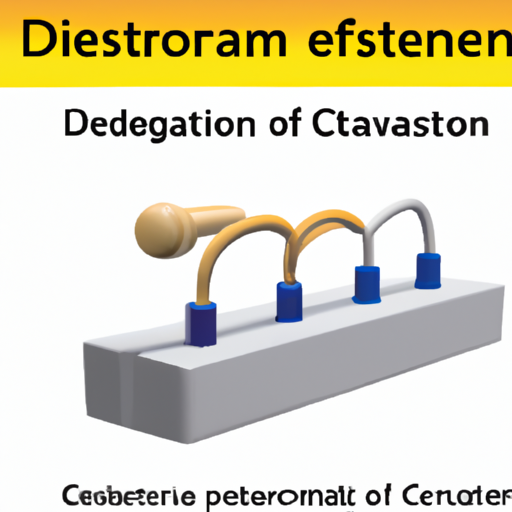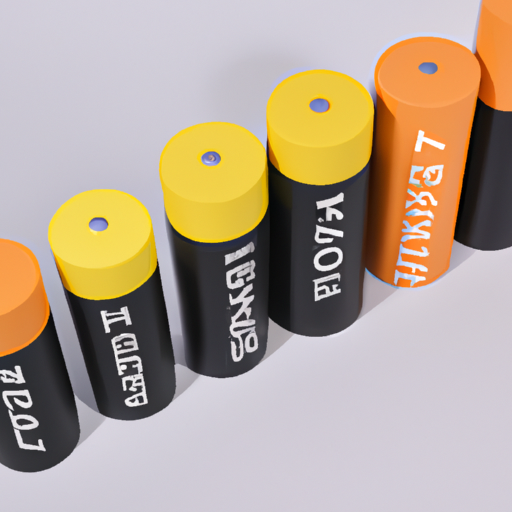What Industries Do Capacitor Wiring Diagrams Include?
I. Introduction
Capacitor wiring diagrams are essential tools in the design, implementation, and maintenance of electrical systems across various industries. These diagrams provide a visual representation of how capacitors are integrated into circuits, illustrating their connections and functions. Understanding these diagrams is crucial for engineers, technicians, and anyone involved in electrical work, as they ensure the safe and efficient operation of devices and systems. This article will explore the significance of capacitor wiring diagrams, the industries that utilize them, and the challenges and future trends associated with their use.
II. Understanding Capacitors
A. Basic Principles of Capacitors
Capacitors are passive electronic components that store and release electrical energy. They consist of two conductive plates separated by an insulating material known as a dielectric. When a voltage is applied across the plates, an electric field is created, allowing the capacitor to store energy. The primary function of capacitors is to store energy temporarily and release it when needed.
There are several types of capacitors, including ceramic, electrolytic, tantalum, and film capacitors, each with unique properties and applications. The choice of capacitor type depends on factors such as voltage rating, capacitance value, and the specific requirements of the circuit.
B. Role of Capacitors in Electrical Systems
Capacitors play a vital role in electrical systems by performing several key functions:
1. **Energy Storage**: Capacitors store energy for later use, providing a quick release of power when needed. This is particularly important in applications like power supplies and energy storage systems.
2. **Filtering and Smoothing Signals**: Capacitors are used in filters to remove unwanted frequencies from signals, ensuring that only the desired frequencies pass through. This is crucial in audio equipment, radio transmitters, and other electronic devices.
3. **Power Factor Correction**: In industrial settings, capacitors help improve the power factor of electrical systems, reducing energy losses and improving efficiency. This is especially important in large motors and transformers.
III. Industries Utilizing Capacitor Wiring Diagrams
Capacitor wiring diagrams are utilized across a wide range of industries, each with its unique applications and requirements.
A. Electrical and Electronics Industry
The electrical and electronics industry is perhaps the most significant user of capacitor wiring diagrams. These diagrams are essential in designing and manufacturing consumer electronics, industrial machinery, and telecommunications equipment. For instance, in consumer electronics like smartphones and televisions, capacitors are used for power supply filtering and signal processing. In industrial machinery, they help manage power distribution and improve efficiency.
B. Automotive Industry
The automotive industry has seen a significant shift towards electric and hybrid vehicles, increasing the demand for capacitors in automotive electronics. Capacitor wiring diagrams are crucial for integrating capacitors into electric vehicle powertrains, traditional combustion engine vehicles, and various automotive electronic systems, such as infotainment and safety features. Capacitors help manage energy flow, improve performance, and enhance the overall reliability of automotive systems.
C. Renewable Energy Sector
As the world moves towards sustainable energy solutions, the renewable energy sector has become a major user of capacitor wiring diagrams. Capacitors are integral to solar power systems, wind energy systems, and energy storage solutions. In solar power systems, capacitors help manage the energy generated by solar panels, while in wind energy systems, they assist in stabilizing power output. Energy storage systems, such as those using supercapacitors, rely on accurate wiring diagrams to ensure efficient energy management.
D. HVAC (Heating, Ventilation, and Air Conditioning)
Capacitors are widely used in HVAC systems, where they play a crucial role in the operation of air conditioning units, refrigeration systems, and heating systems. Capacitor wiring diagrams are essential for ensuring that these systems operate efficiently and safely. For example, in air conditioning units, capacitors help start and run the compressor, while in refrigeration systems, they assist in maintaining consistent temperatures.
E. Manufacturing and Industrial Automation
In manufacturing and industrial automation, capacitors are used in robotics, conveyor systems, and process control systems. Capacitor wiring diagrams are vital for designing and maintaining these systems, ensuring that they operate smoothly and efficiently. For instance, in robotics, capacitors help manage power supply and control signals, while in conveyor systems, they assist in maintaining consistent speed and performance.
F. Aerospace and Defense
The aerospace and defense industries rely heavily on capacitors for avionics systems, military applications, and satellite technology. Capacitor wiring diagrams are crucial for ensuring the reliability and safety of these systems, which often operate in extreme conditions. In avionics, capacitors help manage power distribution and signal processing, while in military applications, they are used in communication systems and radar technology.
G. Medical Equipment
Capacitors are essential components in medical equipment, including diagnostic machines, therapeutic devices, and monitoring systems. Accurate capacitor wiring diagrams are critical for ensuring the safety and effectiveness of these devices. For example, in diagnostic machines like MRI and CT scanners, capacitors help manage power supply and signal processing, while in therapeutic devices, they assist in delivering precise electrical stimulation.
IV. Importance of Accurate Wiring Diagrams
Accurate capacitor wiring diagrams are crucial for several reasons:
A. Safety Considerations
Electrical systems can be dangerous if not designed and maintained correctly. Accurate wiring diagrams help prevent accidents and ensure that systems operate safely. They provide clear instructions for installation and maintenance, reducing the risk of electrical shock or equipment failure.
B. Maintenance and Troubleshooting
Wiring diagrams are invaluable for maintenance and troubleshooting. They allow technicians to quickly identify issues and make necessary repairs, minimizing downtime and ensuring that systems remain operational.
C. Compliance with Industry Standards
Many industries have strict regulations and standards governing electrical systems. Accurate wiring diagrams help ensure compliance with these standards, reducing the risk of legal issues and ensuring the safety of personnel and equipment.
D. Efficiency in Design and Implementation
Accurate wiring diagrams streamline the design and implementation process, allowing engineers to create efficient and effective systems. They provide a clear roadmap for integrating capacitors into circuits, reducing the likelihood of errors and improving overall system performance.
V. Challenges in Creating and Interpreting Wiring Diagrams
Despite their importance, creating and interpreting capacitor wiring diagrams can be challenging due to several factors:
A. Complexity of Modern Electrical Systems
Modern electrical systems are increasingly complex, with numerous components and interconnections. This complexity can make it difficult to create clear and accurate wiring diagrams, leading to potential errors and misunderstandings.
B. Variability in Standards and Practices Across Industries
Different industries may have varying standards and practices for creating wiring diagrams. This variability can create confusion and make it challenging for professionals to interpret diagrams accurately, especially when working across multiple industries.
C. Need for Skilled Professionals
Creating and interpreting wiring diagrams requires a high level of expertise. There is a growing need for skilled professionals who can navigate the complexities of modern electrical systems and produce accurate diagrams.
VI. Future Trends in Capacitor Wiring Diagrams
As technology continues to evolve, several trends are shaping the future of capacitor wiring diagrams:
A. Advancements in Technology
The development of smart capacitors and their integration with the Internet of Things (IoT) is revolutionizing the way capacitors are used in electrical systems. Smart capacitors can monitor and adjust their performance in real-time, improving efficiency and reliability. Wiring diagrams will need to adapt to accommodate these advancements.
B. Evolving Industry Standards
As technology advances, industry standards for wiring diagrams will continue to evolve. Professionals will need to stay updated on these changes to ensure compliance and maintain safety.
C. Increased Focus on Sustainability and Energy Efficiency
With a growing emphasis on sustainability and energy efficiency, capacitor wiring diagrams will play a crucial role in designing systems that minimize energy consumption and reduce environmental impact. This trend will drive innovation in capacitor technology and wiring practices.
VII. Conclusion
Capacitor wiring diagrams are essential tools across various industries, providing critical information for the design, implementation, and maintenance of electrical systems. Their importance cannot be overstated, as they ensure safety, compliance, and efficiency in a wide range of applications. As technology continues to advance, the relevance of capacitors and their wiring diagrams will only grow, making it essential for professionals to stay informed and adapt to new trends and challenges. By understanding the significance of capacitor wiring diagrams, individuals can better appreciate the role of capacitors in modern technology and their impact on various industries.
VIII. References
- [Capacitors: Basics and Applications](https://www.electronics-tutorials.ws)
- [Understanding Wiring Diagrams](https://www.electrical-engineering-portal.com)
- [The Role of Capacitors in Electrical Systems](https://www.electrical4u.com)
- [Advancements in Capacitor Technology](https://www.sciencedirect.com)
- [Industry Standards for Electrical Systems](https://www.iec.ch)
This blog post provides a comprehensive overview of the industries that utilize capacitor wiring diagrams, emphasizing their importance, challenges, and future trends. Each section can be further expanded with specific examples and case studies to enhance the depth of the discussion.













